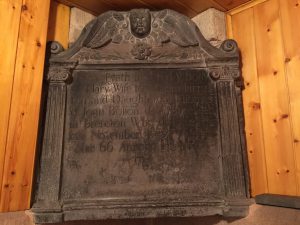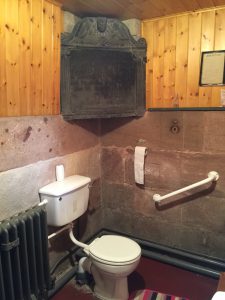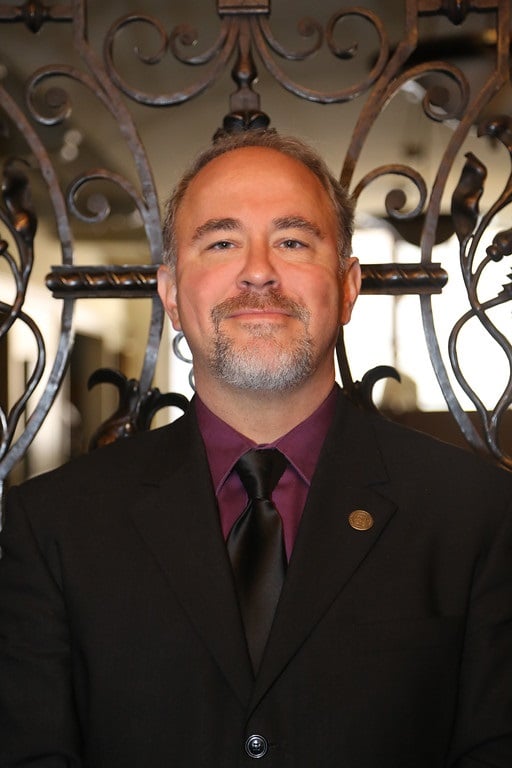 In the virtual world of genealogy, one can easily go to www.findagrave.com or www.billiongraves.com and record a gravestone – or simply pay respects to an ancestor’s gravestone. This technology has made it possible for countless genealogists to virtually visit or search gravestones thousands of miles away. This technology can also be utilized by apps designed for your smartphone.
In the virtual world of genealogy, one can easily go to www.findagrave.com or www.billiongraves.com and record a gravestone – or simply pay respects to an ancestor’s gravestone. This technology has made it possible for countless genealogists to virtually visit or search gravestones thousands of miles away. This technology can also be utilized by apps designed for your smartphone.
What about the gravestone no longer located in its original cemetery? When I first started working on my book A Guide to Massachusetts Cemeteries in 1987, I made inquiries into cemeteries throughout the Commonwealth of Massachusetts. Strange stories of abandoned gravestones located on stone walls or at historical societies became a database in their own right.
Where did these stones come from, and where did they belong? Shortly after I started working at NEHGS in 1993, three seventeenth-century gravestones were mounted on the wall of the portico of Old South Church in Boston’s Copley Square. These gravestones were found in various locations in Boston and placed here during the nineteenth century. One can pay respects to the gravestone of Ann Quinsey, the thirteen-year-old niece of John Hull, minter of the Pine Tree Shilling; to Joshua Scottow; and to Captain John Alden (d. 1701/2), the son of Mayflower passengers John and Priscilla (Mullins) Alden. Was this last stone taken by a souvenir hunter of the eighteenth or nineteenth centuries and then discarded? In 1870 this stone and others were located when a cellar was being dug at Carlton Place, near Eliot Street. In The New England Historical and Genealogical Register of January 1872,[1] several other missing gravestones are listed, their current whereabouts unknown: Captain Thomas Moore (d. 1689), Mary Jones (d. 1688), Edmund Perkins (d. 1689), Sarah Phippen (d. 17–?), Mary Monk (d. 1697), Mary Monk (d. 1701), Elizabeth Pierce (d. 1680), and Nathaniel Dyer (d. 1681).
It is illegal to sell gravestones at flea markets and antique stores, but they still end up surfacing from time to time. I recall in the 1980s seeing an original slate stone from the 1750s being used to prop a door open at Faneuil Hall marketplace. In Old Sturbridge Village in Massachusetts, the gravestone purchased from an antique dealer in the 1960s for their churchyard turned out to derive from a cemetery in Gilmanton, New Hampshire, and was returned in 1991.
Ancient gravestones from Roman-era Britain and France were found in practically every museum I visited in Europe this year. I would think a detailed transcription database of all these stones should be undertaken by the archeological and genealogical community. But during my trip I visited my own ancestors. I went to the small village of Brereton-cum-Smethwick in Cheshire, England. Here my maternal ancestors lived from the 1580s until the late nineteenth century. I attended church services at my ancestral home, where the sixteenth-century stone edifice of St. Oswald’s still stands. I took pictures of all the monuments, both inside and outside – or so I thought.
 After brushing off many gravestones outside, my hands needed some soap and water. I inquired where the bathroom was and was directed the small bathroom located in the church. As a lover of gravestones and cemeteries I was greeted by the most interesting monument I have photographed. Placed into the wall was a black slate gravestone with the following information: Here Lyeth Interred ye Body / of Mary Wife of William Farring / ton and Daughter of Thomas & Joan Bosson de Moorehead / in Brereton. Who departed this / Life November ye 24th Ætatis / Suae 66 Annoas Domini / 1715. (My Findagrave entry for the stone can be found here.)
After brushing off many gravestones outside, my hands needed some soap and water. I inquired where the bathroom was and was directed the small bathroom located in the church. As a lover of gravestones and cemeteries I was greeted by the most interesting monument I have photographed. Placed into the wall was a black slate gravestone with the following information: Here Lyeth Interred ye Body / of Mary Wife of William Farring / ton and Daughter of Thomas & Joan Bosson de Moorehead / in Brereton. Who departed this / Life November ye 24th Ætatis / Suae 66 Annoas Domini / 1715. (My Findagrave entry for the stone can be found here.)
The placement of the twentieth-century plumbing around this tomb is what struck me the most. I have never until this day seen a gravestone located in a bathroom. This really gives new meaning to finding a final resting place!
Note
[1] Register 25 [1871]: 88.
Share this:

About David Allen Lambert
David Lambert has been on the staff of NEHGS since 1993 and is the organization’s Chief Genealogist. David is an internationally recognized speaker on the topics of genealogy and history. His genealogical expertise includes New England and Atlantic Canadian records of the 17th through 21st century; military records; DNA research; and Native American and African American genealogical research in New England. Lambert has published many articles in the New England Historical and Genealogical Register, the New Hampshire Genealogical Record, Rhode Island Roots, The Mayflower Descendant, and American Ancestors magazine. He has also published A Guide to Massachusetts Cemeteries (NEHGS, 2009). David is an elected Fellow of the Massachusetts Historical Society in Boston, Mass., and a life member of the New Hampshire Society of the Cincinnati. He is also the tribal genealogist for the Massachuset-Punkapoag Indians of Massachusetts.View all posts by David Allen Lambert →